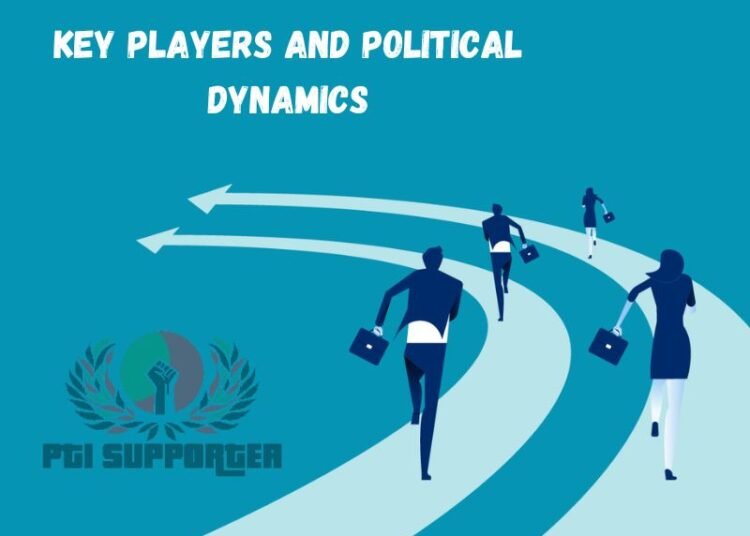They are understanding Pakistan’s Election Results. The politics of South Asia are complex, and the outcome of Pakistan’s election often mirrors changes in both the nation and the region. The outcomes of these elections greatly influence the nation’s administration and policy implementation, as well as social cohesion, economic growth, and foreign relations. To provide us with a better knowledge of Pakistan’s new political landscape, key actors, and potential future courses, this in-depth analysis attempts to dissect the nuances of the country’s most recent election results.
Key Players and Political Dynamics

The election results showed that big political groups like the Pakistan Muslim League-Nawaz (PML-N), led by the Sharif family, and the Pakistan Tehreek-e-Insaf (PTI), led by Imran Khan, are still very strong. New political groups and coalitions were also very important, pointing to a move toward a more diverse political discourse. What’s going on between these groups shows how philosophy, regionalism, and personalism all affect each other in Pakistan’s political system.
Election Outcomes and Implications
The results showed how power was shared between the groups and pointed to major social and political trends. It was possible to see how voters felt about changing government, economic problems, and social policies by examining how different parties did in different parts of Pakistan. In this section, we’ll look at the details of the election results, including the winning margins, the areas where each party did well, and what these results mean for Pakistan’s policy direction.
Future Projections
Due to the poll results, big changes are coming to Pakistan’s politics and society. This part makes predictions about how the election might change the country’s social programs, economic policies, and way of running the government. In addition, the part that nearby countries and global powers play in determining Pakistan’s future is looked at, giving a full picture of the problems and chances ahead.
The Verdict of the People
Despite predictions by Pakistani political analysts, PTI candidates won. About everyone expected the PML-N to shock the PTI and send them packing. This projection focused on Khan’s relationship with Pakistan’s powerful military establishment, which supported the PML-N’s reelection and opposed Khan and his PTI.
After attacking military posts nationwide on May 9, 2023, his party has been under relentless attack. Khan cannot campaign for his party before the election since he was imprisoned for bribery and illegally managing confidential records last year.
These obstacles aside, PTI-backed candidates won a strong majority, turning Pakistani politics around in 2024. Khan’s populist, ambitious plan may reject Pakistan’s dynastic PML-N and PPP. They may also reject the military establishment’s political activity, particularly their resistance to the PTI and crackdown last year.
What Happens Next?
Much about government formation is unknown. However, the PML-N, PPP, and MQM will likely form a coalition government. Khan said from prison that the PTI will not form a government with the PML-N or PPP. The PTI would likely form a provincial administration as it won almost every provincial seat in Khyber Pakhtunkhwa. It may try constructing a Punjab provincial administration, but the PML-N will fight it. Because PTI candidates ran as independents, the PML-N may poach their winners.
Despite the PML-N and PPP forming a coalition government in Islamabad, the PTI can impede its operations through court challenges to electoral outcomes, public demonstrations, and its substantial parliamentary representation. The military establishment may try to quell PTI agitation so the coalition government can govern. The military-coalition hybrid strategy may work in theory. Its lack of a popular mandate, accountability ambiguity, and potential for coalition government-establishment conflict make it insecure.
Supporting a PPP-PML-N coalition in its IMF negotiations while allowing the PTI some leeway—possibly through Khan’s release—to quell opposition to the new political order could stabilize the army. Low political tension and economic stability are preferable. Political manoeuvring will soon prevail.
Economic Challenges for Pakistan Ahead

Regarding the creation of the government, there are still many unknowns. It seems more possible that the PML-N would join forces with the PPP and MQM to form a coalition government. From behind bars, Khan declared that the PTI would not create a coalition with the PML-N or PPP to form a government. It might also attempt establishing a provincial government in Punjab, although the PML-N will fiercely oppose it. These, particularly the PML-N, stole its winning candidates since its candidates ran as independents.
It may have to do so in the face of a vehement protest from the PTI and the need to build consensus within the coalition on the challenging policy changes demanded by the IMF. Assume that the PML-N leads in terms of economic strategy. If so, it must close a significant credibility gap in late 2022 and early 2023 due to its former finance minister, Ishaq Dar, procrastinating on the IMF’s reform recommendations. The coalition’s dynamics can heighten these worries.
Conclusion
The outcomes of the most recent election in Pakistan represent a turning point in the nation’s political development. This important South Asian country’s complex democratic dance teaches important lessons about foreign diplomacy, development, and government. The world is watching Pakistan as it tries to fulfil its electoral mandate, acknowledging its importance to regional stability and worldwide economic networks. Anyone interested in South Asian politics, world relations, and development must understand these elections.

















